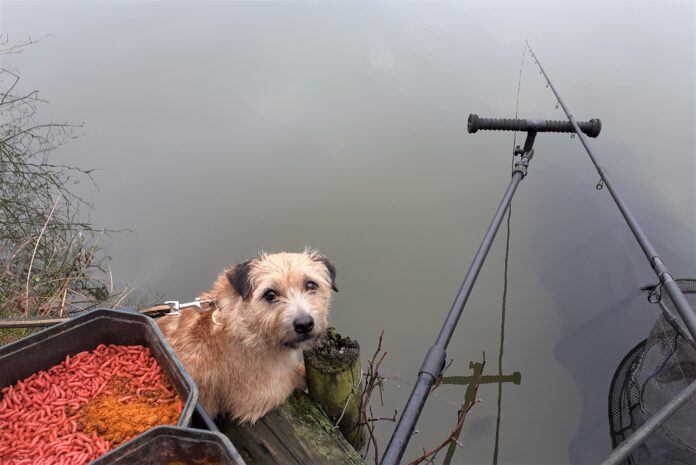MURKY DAYS


A feature this winter has been heavy frosts and several foggy days spent out on the bank, but I don’t mind the cold if I’m getting bites and catching a few. When the weather is chilly the big roach can show locally, so I decided to visit the deepest pegs on the far side of the Specimen Lake at Woodland Waters. The tree cover behind was giving good protection from the northerly wind. My French pal Jarome was already fishing when I arrived, as enthusiastic as ever, even though he hadn’t yet caught anything. It was arctic, even with the tree shelter, so I kept things simple. I set up a 12ft quivertip rod with a small cage feeder and a 3lb fluorocarbon hook length. I was intending to feed casters and chopped worm in a dark groundbait, mainly concentrating with red maggots on a medium wire size 16 hook. After casting around looking for features, I opted to fish 30 metres out, just short of a sand bar that runs down most of the north bank into a big bay.
WINTER SURPRISE
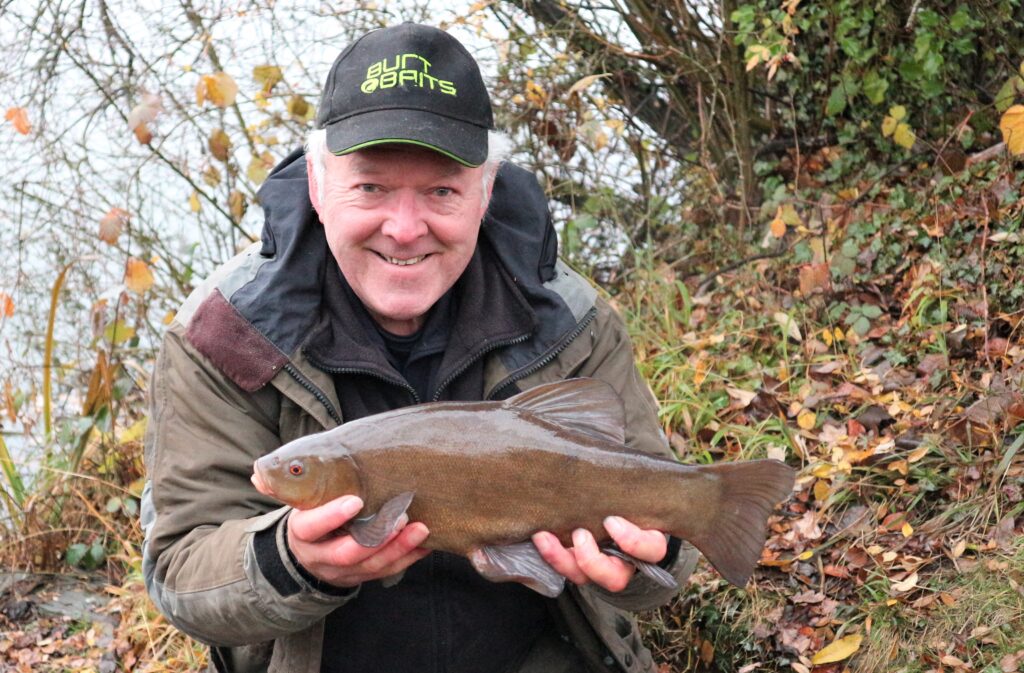

It took ages to get bites, but I eventually caught a couple of 8oz roach and a skimmer close to a pound. The bites were tiny indications on my sensitive 3/4oz quivertip. There were big gaps between any interest, and some of the slight flickers didn’t develop any further. I wound in a few times to discover the red maggots on my hook had been sucked empty. Normally skimmers do this, so I tried a small segment of worm, which indeed resulted in another half-decent skimmer. After that I switched about trying casters, which didn’t bring any response, also single and double maggots, even a worm/maggot cocktail. In the end I found sitting it out with two grubs was most effective, and eventually I managed to get something bigger and more aggressive attached. It was a strange scrap, a bit like you would expect from a feisty hybrid or chub, turning out to be a surprise late December tench. A perfect-looking fish that really made my day.
MUCKY CANAL
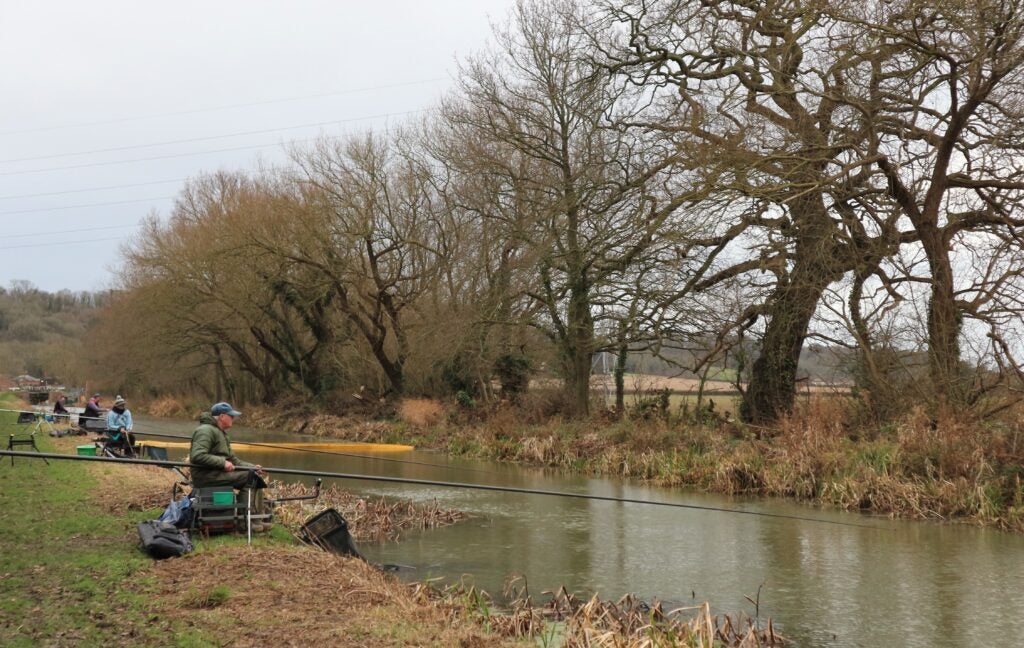

The first match of the new year on the Grantham Canal had seen heavy rain the night before so the water was well coloured. The access track was waterlogged, resulting in most of us getting our cars bogged down. It took a while to sort that mess out, meaning we had to put the start time back. It was a strange day with some big roach showing early, but not in my peg. It took ages to get bites and I eventually scraped a few small fish together. When I did hook a decent roach, a pike grabbed it. I quickly stripped some elastic out of my pole’s top kit via its puller bung, and amazingly the battered fish catapulted free of the predator’s grip. After that it was dire, with just the odd pair of eyes turning up. I sat it out, hoping for a bonus tench, convincing myself that they might not all be hibernating, remembering the one I caught just before Christmas. I finally hooked a potential match-winning fish, but it shed the hook as I reached for my landing net.
MORE FOG
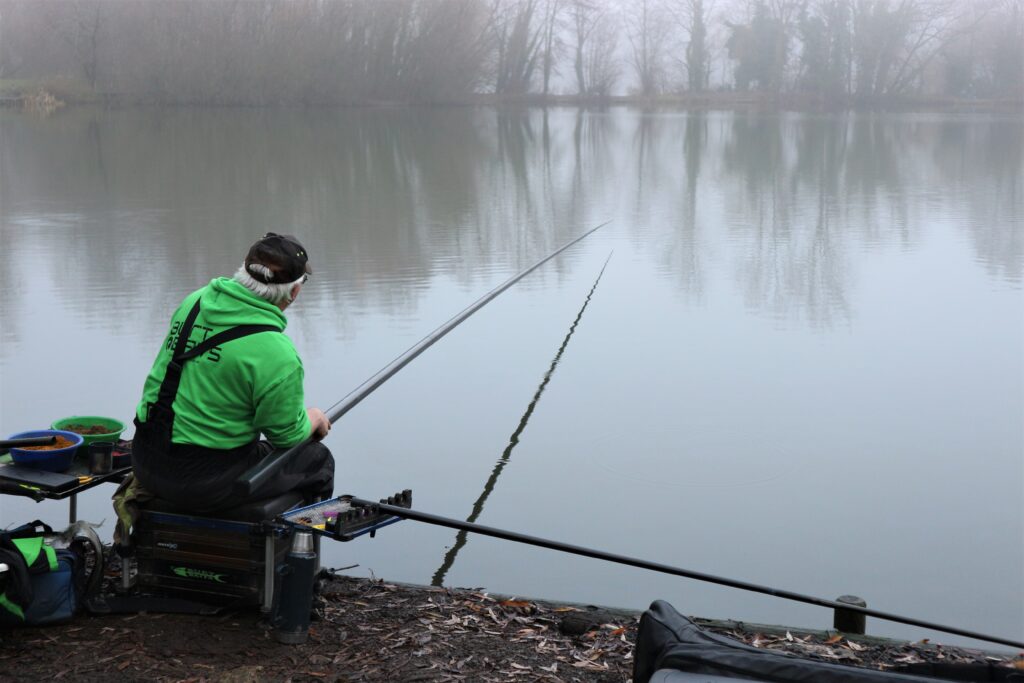

My mate Andy was up from the south for a visit, greeted by more dense fog. We stayed local because the roads were icy. He decided to pole fish, while I wanted to keep experimenting with the helicopter rigs that had once again captured my attention this winter. He started to get those annoying cold water ghost bites as I call them, but didn’t connect with anything. It took the usual good hour before my quivertip showed any signs of life. When I eventually experienced a savage pull round, the swim came alive, surprisingly with skimmers and not the big roach I was hoping for. It was still very enjoyable, latching into fish from 6oz up to around the size where they show signs of turning into proper bronze bream. Andy managed to put a few fish together on the long pole, but that was hard work. The maggot feeder was once again more productive, also pulling some roach in the end, topped off with a brace of decent hybrids.
A GOOD MOVE
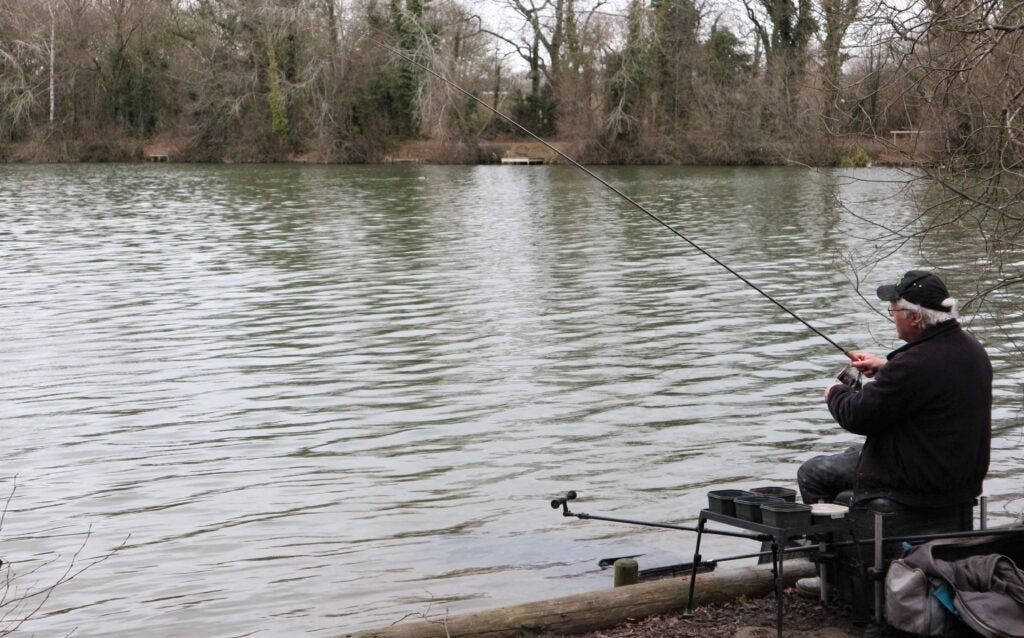

Several days later I switched to the bigger lake next door, where I caught that tench a few weeks previously. Not many anglers were about; even carpers were thin on the ground. There was an evil breeze in my face, but having heard on the local grapevine that a lot of roach were in the big bay, I decided to brave it out. I tried casting a maggot feeder even more regularly to kick-start things, but still it took the normal hour to get a response. This time the roach did turn up, with plenty in the 4 to 8oz category, along with odd bigger skimmers. Interesting the latter species were showing, because they often do a disappearing act during the winter. I hadn’t bothered flavouring my maggots by the way, but intended to return with some curry and turmeric powder to try a comparison test a few days later. There were so many fish out in front of me, I’m not certain it would have made any difference. The only dead spells were due to pike problems.
BUSY METHOD
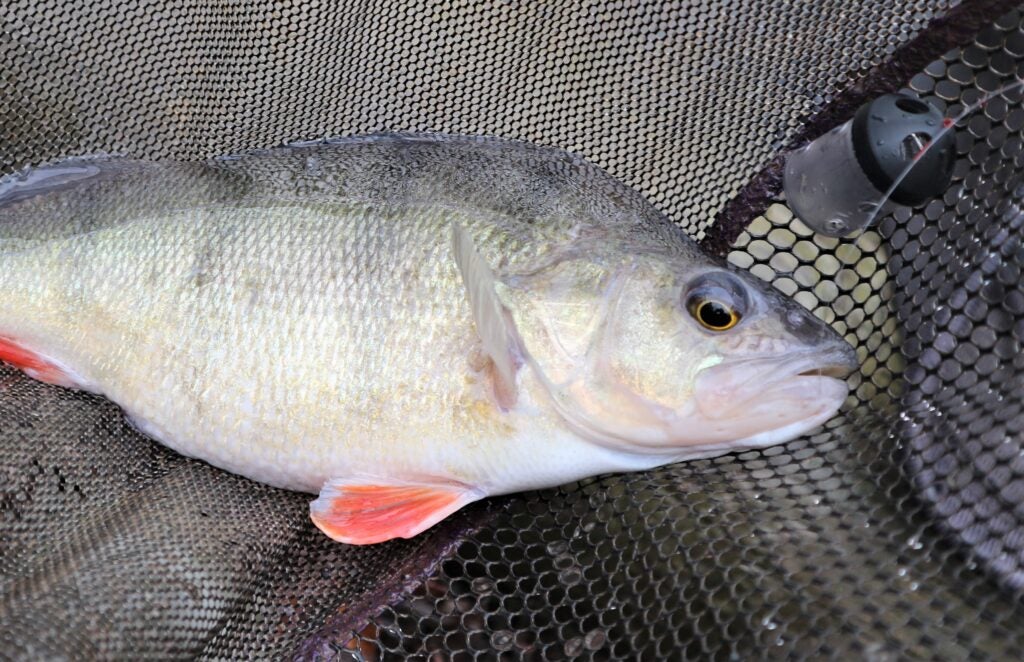

I’ve continued to modify my helicopter rigs, to the point where I’m using small Stotz weights to anchor a swivel bead on the main line, instead of the new breed of firmer-grip rubber line stops. The upper weight is easier to move if it’s not crimped on too heavily. I’ve discovered this works brilliantly if anything big is hooked and keeps thumping hard against the maggot feeder, knocking the single Stotz up the line, so the feeder is almost free-running. Combining this with slightly longer 6inch fluorocarbon hook lengths fixed to the swivel bead, I’m hardly losing any fish on the way in, even soft-mouthed skimmers. I can still get my hook bait close to the feeder, by pushing the stopper shot and swivel bead up the main line a few inches. No tangles occur due to the stiffer fluorocarbon, as you can see with this chunky perch that turned up. I will cover all this in a separate feature soon, because this evolving rig has been catching me loads.
BEATING THE COLD
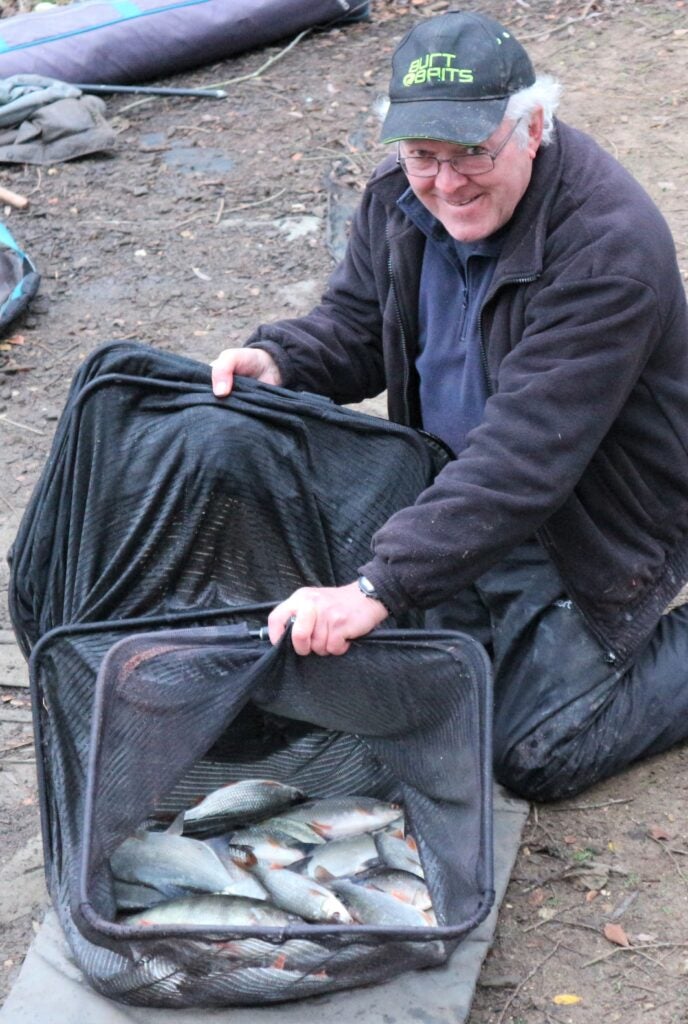

There’s no time to get cold when keeping busy like this, plus feeder fishing is less of an endurance test, compared to other methods like hanging onto a long pole during the depths of winter. I did try fishing a waggler in this area a few days previously, but struggled with it. The prevailing head-on wind tends to make your eyes feel like they’ve been sandpapered after a few hours. No so bad with a quivertip rod positioned off to one side. During this session, once the bites began to materialise, they were only interrupted a couple of times by marauding pike. Casting a Black Cap Feeder 30 metres out I caught 40 roach, a fair few requiring a landing net, with a couple of fish nudging the pound mark. Some surprise rudd turned up too, plus odd skimmers and hybrids. There were none of the giant roach I was hoping for, but with hardly any other anglers braving the wintry conditions, I was more than happy with this good double-figure haul.
WATCHING WILDLIFE
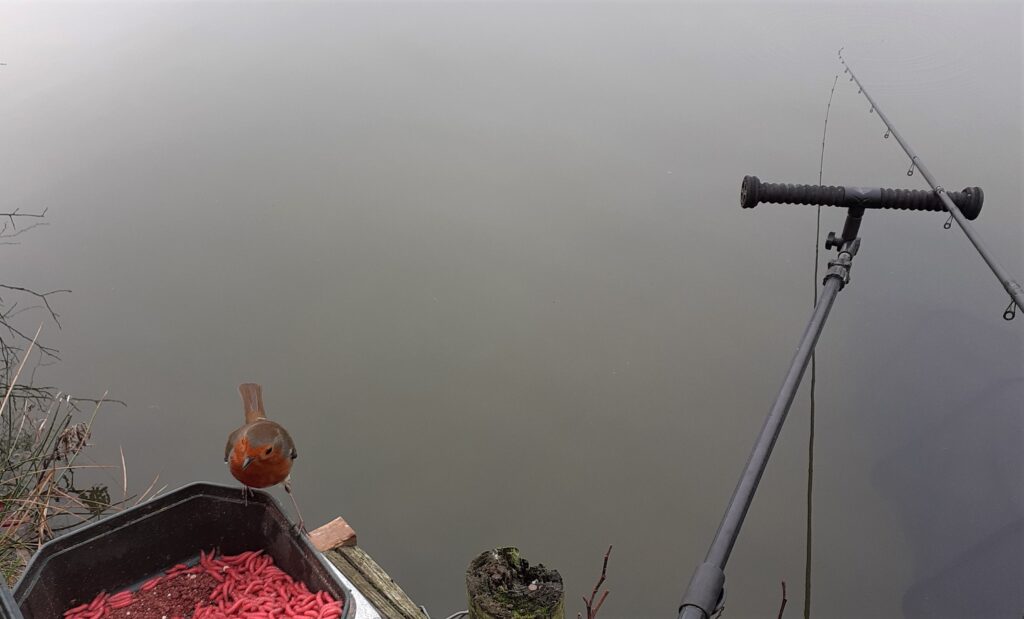

Although it can be a bit galling scraping frost off your car first thing in the morning, with the prospect of sitting on a cold bank all day under gloomy conditions, there’s still plenty I like about fishing in winter. There are less people about and you tend to see and hear more wildlife. As you can witness here, birds get bolder too. Apart from being entertained by this cheeky robin, a blackbird and tiny wren were both enjoying pinching some of my maggots. I spotted a kingfisher a couple of times, also a big sparrow hawk and could hear a woodpecker in the distant woods. This was a slower session, but I didn’t mind, sitting in a more sheltered area. It took a couple of hours to gain a response, again using a helicopter set-up with a blockend feeder. I was on a different lake and the roach just weren’t having it, with mainly skimmers and a few small perch responding. I thought about setting up a pole, but it was just too cold to bother with extra fussing around.
LAST KNOCKINGS
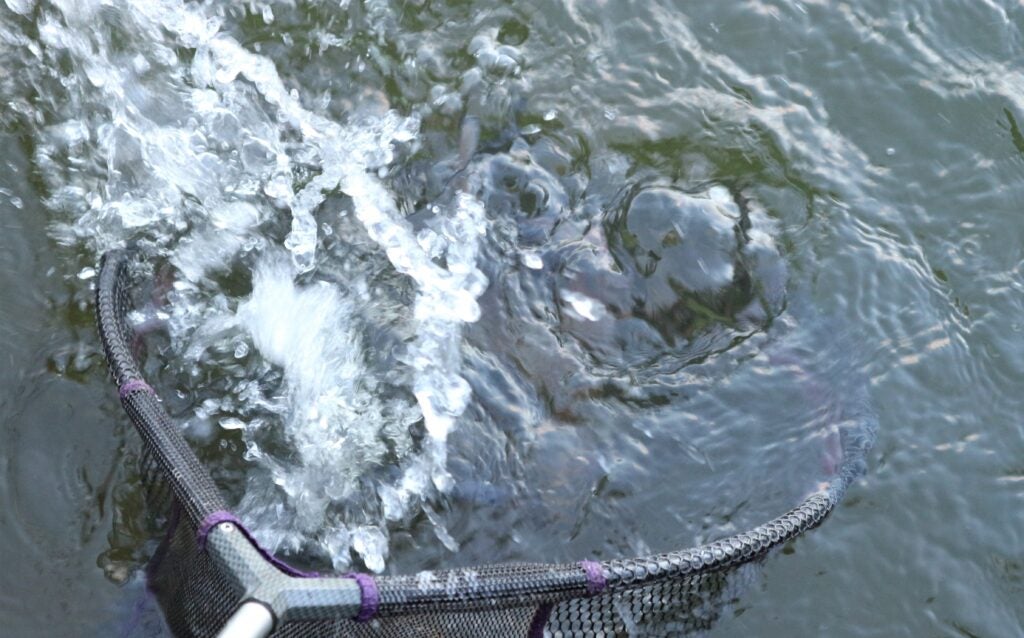

Something I’ve learnt when it’s hard graft in the cold, is to try and stick it out for the last hour of daylight. It’s amazing how fish like big roach switch on as the light fades. Normally the wind drops away at this point and it feels a few degrees warmer. I was still catching odd skimmers but not much else, switching between single and double red maggots on a size 18 hook. I’ve been trying the Guru LWG spade end feeder model, nipping the barb off with pincers. This has just a big enough spade to anchor 4 or 5lb fluorocarbon, providing you don’t use too many turns when forming your knots. I find six turns sufficient with thicker fluorocarbon, which grips the shank of small hooks surprisingly well. The hook I’m referring to is big for its size, more like a 17 in comparison to other popular gauges, ideal for single or double maggots. Suddenly my quivertip bent round and after a good scrap, a lively fish was thrashing about in my landing net.
RARE FISH
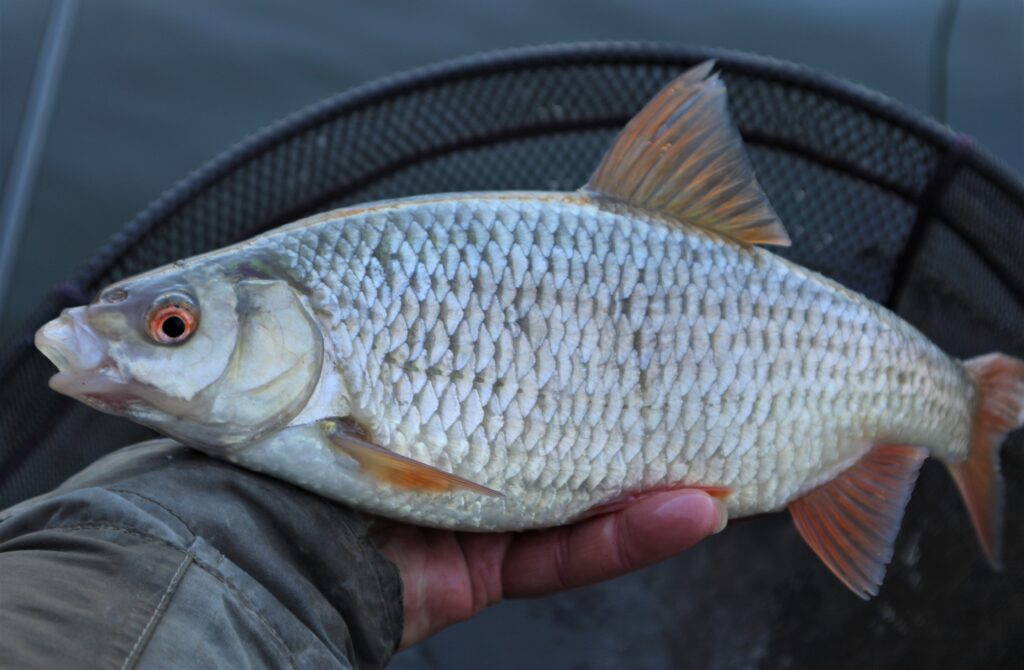

I never tire of catching cracking winter roach like this beauty. They’re somehow surviving the huge odds stacked against them, especially considering the growing list of predators they need to avoid. They turn into rarely seen shadowy creatures, apart from dull, cold periods, when these perfect-looking fish occasionally come out to play. Once spring arrives and it’s nearly spawning time, they normally disappear again for the rest of the year. The part that baffles me is how you have to scale down to tiny hooks and super-thin lines to fool fish like this when using float tackle, and yet with a blockend crashing in they will home in on short, thick traces, providing the hook bait is tight to the feeder. The only other example I can think of when big roach throw caution to the wind, has been when using hemp and tares on rivers. Get big flowing water red fins competing for hemp and they will often wolf down a bigger tare, even on a size 14 or 16 hook.
TOP DOGS
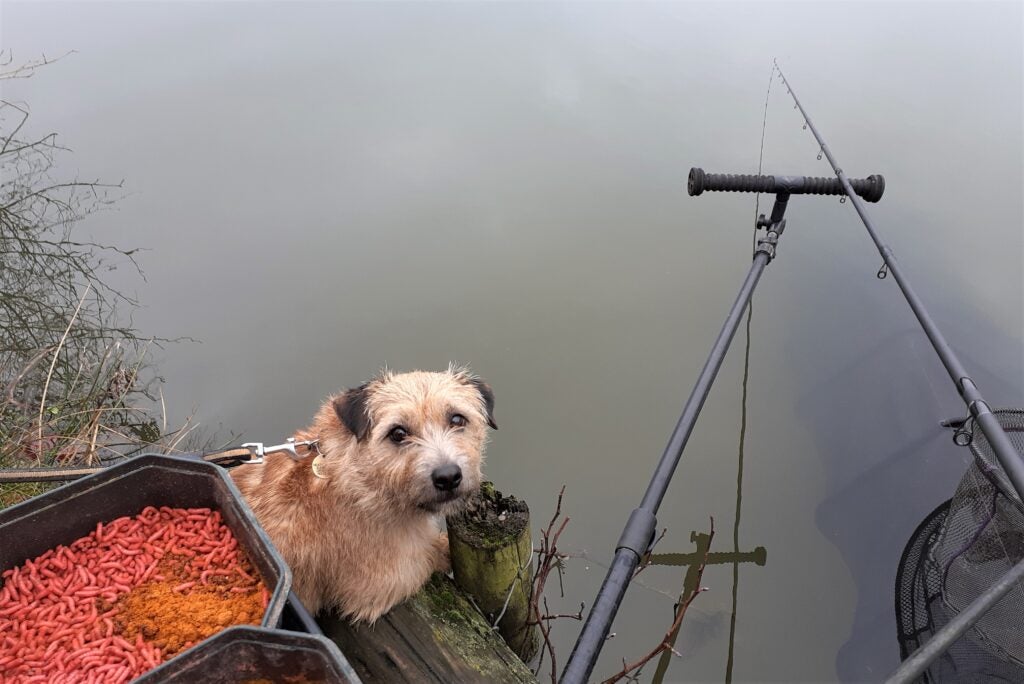

I always look forward to seeing my mate Ralph when fishing at Woodies. This amazing little dog must have been an angler in a previous life, because whenever his owner takes him for a walk around the lakes, he loves nothing better than studying a float or quivertip. He will sit there for ages, only looking up at you occasionally as if to say, “Hurry up I want to see you catch something!” That’s a stage where you need to be careful, otherwise you can end up with both a fish and a dog in your keepnet! Ralph barks and yelps at whoever is walking him if they have the audacity to try and go past without stopping. He just wants to sit as close as possible, willing something to happen. He isn’t quite as well trained as the dogs Bob James had, which would jump in and gently land your catch for you. My pal James Robbins has a similar companion called Monty, who you can see on some of his Cadence videos, getting his nose or tail into important shots.
CHASING DREAMS
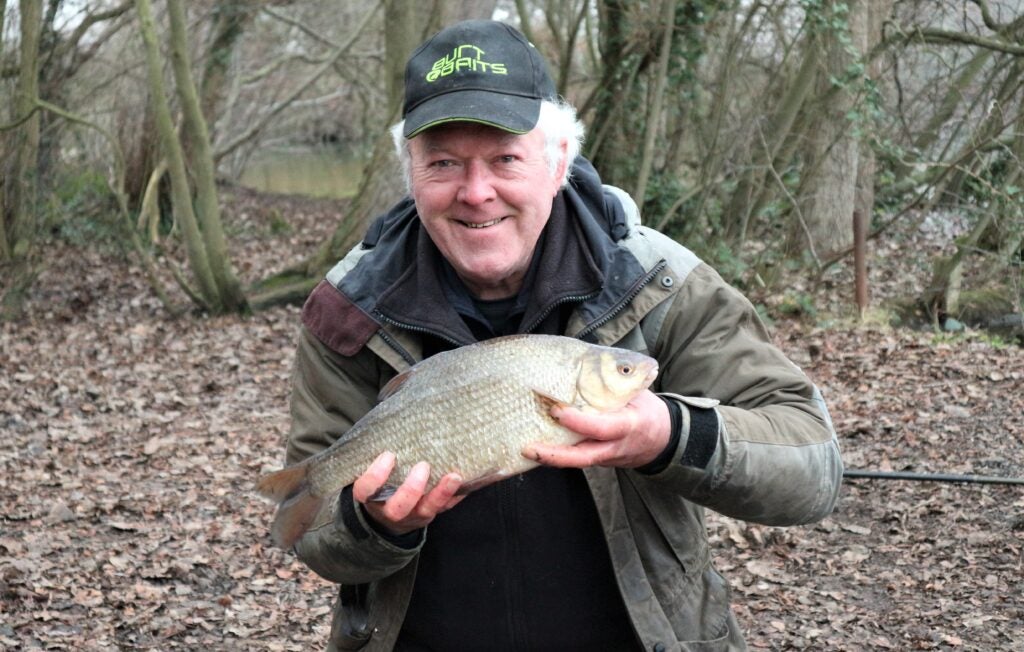

Late January saw me losing a monster roach at the landing net and having another good fish stolen by a big pike. I sat it out through a particularly cold and damp day back on the Specimen Lake, taking much longer to get any interest, despite working a small Drennan Black Cap feeder really hard. Even with regular feeding, it’s almost impossible to get through a pint of maggots with the smallest size. I know others spod out loads of bait when using helicopter set-ups, but doing that on a lake with a big head of double-figure carp isn’t always a good idea when targeting roach! My gently gently approach finally started to produce silvers, which began to increase in size towards the afternoon. Regular casting didn’t work, so it was a case of sitting and waiting for takes out of the blue. One of those turned into a proper rod-bender, too lively for a bream. Once landed it looked like a magical 3lb roach, but there were a few tell-tale signs that said hybrid.










